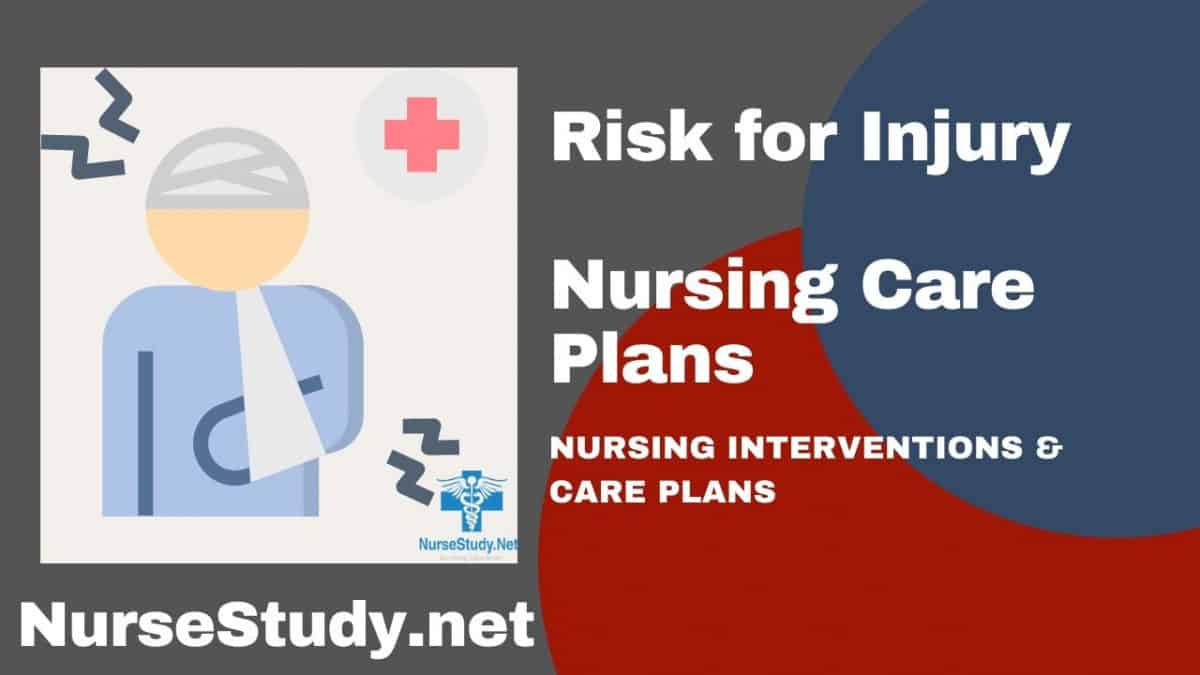Risk for injury is when an individual is at increased risk of physical harm due to environmental conditions interacting with the individual’s adaptive and defensive resources. This nursing diagnosis focuses on prevention rather than treatment of existing injuries.
Common Types of Injuries Nurses Must Consider
- Falls and fall-related injuries
- Medication-related injuries
- Pressure injuries
- Thermal injuries (burns, scalds)
- Physical trauma (cuts, abrasions, fractures)
- Self-inflicted injuries
- Environmental hazards-related injuries
- Equipment-related injuries
Risk Factors and Contributing Elements
Understanding risk factors is crucial for effective prevention. Key risk factors include:
Physical Factors
- Altered mobility status
- Balance impairment
- Muscle weakness
- Sensory deficits
- History of falls
- Advanced age or very young age
Cognitive Factors
- Altered mental status
- Confusion
- Memory impairment
- Poor judgment
- Language barriers
Environmental Factors
- Poor lighting
- Slippery surfaces
- Cluttered spaces
- Unsafe equipment
- Lack of safety devices
Medical Factors
- Multiple medications (especially psychotropics)
- Acute illness
- Chronic conditions
- Recent surgery
- Poor nutrition status
Comprehensive Nursing Assessment
Primary Assessment Components
Physical Assessment
- Complete head-to-toe examination
- Mobility evaluation
- Balance assessment
- Sensory function testing
- Vital signs monitoring
Environmental Assessment
- Room safety evaluation
- Equipment inspection
- Lighting assessment
- Floor surface examination
Risk Assessment Tools
- Fall risk assessment scales
- Pressure injury risk tools
- Cognitive assessment tools
- Safety awareness evaluation
Documentation Review
- Medical history
- Medication profile
- Previous incidents
- Laboratory results
Evidence-Based Nursing Care Plans
Nursing Care Plan 1: Fall Risk
Nursing Diagnosis Statement:
Risk for falls related to impaired mobility and balance deficits
Related Factors:
- Advanced age
- Muscle weakness
- Use of assistive devices
- Multiple medications
- History of falls
Nursing Interventions and Rationales:
Implement hourly rounding
- Rationale: Regular monitoring ensures prompt response to patient needs and reduces fall risk
Maintain bed in lowest position with rails up
- Rationale: Minimizes injury potential if fall occurs
Ensure proper lighting and clear pathways
- Rationale: Improves visibility and reduces environmental hazards
Provide fall prevention education
- Rationale: Increases patient awareness and compliance with safety measures
Desired Outcomes:
- The patient will remain free from falls
- The patient will demonstrate proper use of call light
- The patient will verbalize understanding of fall prevention strategies
Nursing Care Plan 2: Medication-Related Injury Risk
Nursing Diagnosis Statement:
Risk for injury related to adverse effects of multiple medications
Related Factors:
- Polypharmacy
- Anticoagulation therapy
- Sedating medications
- Age-related changes in metabolism
Nursing Interventions and Rationales:
Perform medication reconciliation
- Rationale: Identifies potential drug interactions and risks
Monitor for side effects
- Rationale: Enables early intervention and prevention of complications
Implement safety precautions based on medication profile
- Rationale: Reduces risk of medication-related injuries
Desired Outcomes:
- The patient will remain free from medication-related injuries
- Patient will demonstrate an understanding of medication safety
- The patient will report side effects promptly
Nursing Care Plan 3: Environmental Safety Risk
Nursing Diagnosis Statement:
Risk for injury related to environmental hazards
Related Factors:
- Poor lighting
- Cluttered spaces
- Lack of safety equipment
- Unfamiliar environment
Nursing Interventions and Rationales:
Conduct an environmental safety assessment
- Rationale: Identifies and addresses potential hazards
Install appropriate safety equipment
- Rationale: Provides necessary support and protection
Educate about environmental safety
- Rationale: Promotes awareness and prevention
Desired Outcomes:
- The patient will navigate the environment safely
- The patient will identify potential hazards
- The environment will remain hazard-free
Nursing Care Plan 4: Cognitive Impairment Risk
Nursing Diagnosis Statement:
Risk for injury related to altered cognitive function
Related Factors:
- Confusion
- Impaired judgment
- Memory deficits
- Behavioral issues
Nursing Interventions and Rationales:
Implement safety precautions
- Rationale: Protects patient during periods of confusion
Provide constant supervision as needed
- Rationale: Ensures immediate response to unsafe behavior
Use orientation strategies
- Rationale: Helps maintain awareness of surroundings
Desired Outcomes:
- The patient will remain safe despite cognitive impairment
- The patient will follow safety instructions when prompted
- Caregiver will demonstrate an understanding of safety measures
Nursing Care Plan 5: Physical Trauma Risk
Nursing Diagnosis Statement:
Risk for physical trauma related to impaired physical mobility
Related Factors:
- Muscle weakness
- Poor coordination
- Use of assistive devices
- Sensory deficits
Nursing Interventions and Rationales:
Assist with mobility
- Rationale: Prevents falls and injuries during movement
Teach proper use of assistive devices
- Rationale: Ensures safe mobility
Implement exercise program
- Rationale: Improves strength and coordination
Desired Outcomes:
- The patient will demonstrate safe mobility techniques
- The patient will use assistive devices correctly
- The patient will remain free from physical trauma
Prevention Strategies
Primary Prevention
- Risk assessment
- Environmental modification
- Patient Education
- Staff training
- Equipment maintenance
Secondary Prevention
- Early intervention
- Regular monitoring
- Prompt response to safety concerns
- Documentation of near-misses
Tertiary Prevention
- Post-incident analysis
- Care plan modification
- Family education
- Support system development
References
- American Nurses Association. (2024). Nursing: Scope and Standards of Practice (4th ed.). American Nurses Association.
- Butcher, H. K., Bulechek, G. M., Dochterman, J. M., & Wagner, C. M. (2023). Nursing Interventions Classification (NIC) (8th ed.). Elsevier.
- Journal of Nursing Care Quality. (2024). Evidence-Based Fall Prevention Strategies in Acute Care Settings: A Systematic Review. 39(1), 15-28.
- Patient Safety Network. (2023). Preventing Hospital-Acquired Injuries: A Comprehensive Approach. BMJ Quality & Safety, 32(4), 245-259.
- The Joint Commission Journal on Quality and Patient Safety. (2024). Risk Assessment Tools in Nursing Practice: A Critical Analysis. 50(2), 78-92.
- World Health Organization. (2023). Global Report on Falls Prevention in Older Age: Evidence-Based Strategies. WHO Press.
